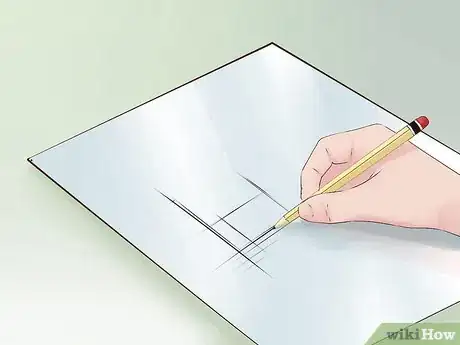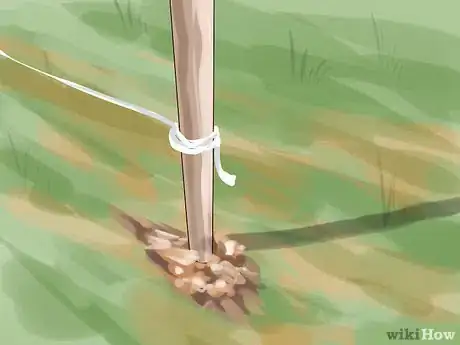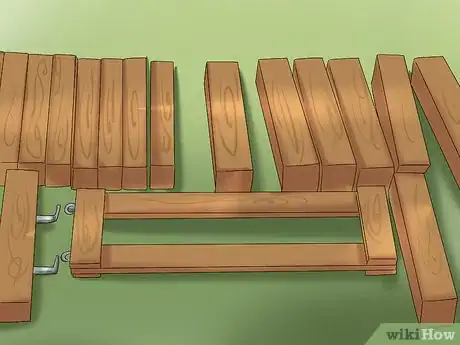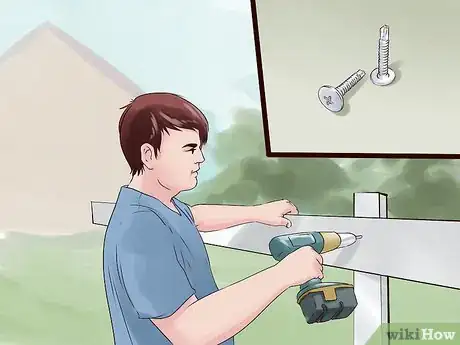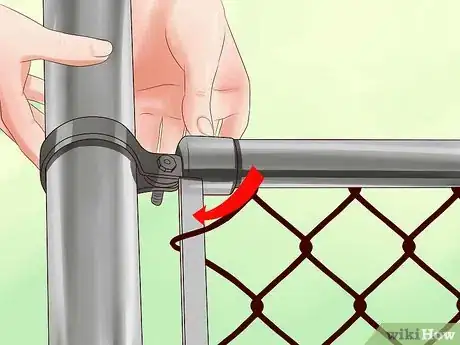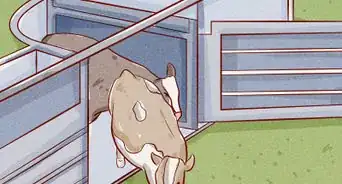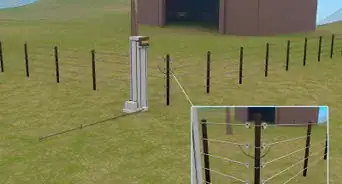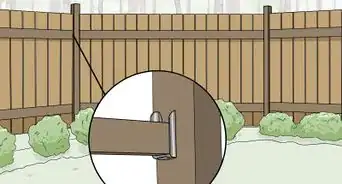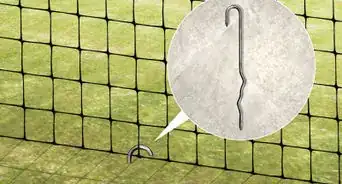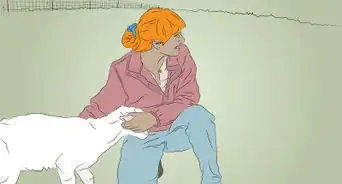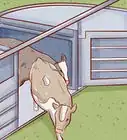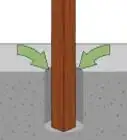This article was co-authored by Karin Lindquist, a trusted member of wikiHow's volunteer community. Karin Lindquist earned a BSc in Agriculture as an Animal Science major from the University of Alberta, Canada. She has over 20 years of experience working with cattle and crops. She's worked for a mixed-practice veterinarian, as a sales representative in a farm supply store, and as a research assistant doing rangeland, soil, and crop research. She currently works as a forage and beef agriculture extension specialist, advising farmers on a variety of issues relating to their cattle and the forages they grow and harvest.
This article has been viewed 69,898 times.
Learn more...
This is a how-to guide to make a fence and/or a corral with cattle panels.
Steps
-
1Plan. Draw out a plan of how and where you wish to lay out your fence. Take measurements with a measuring tape or ribbon of at least 100 feet (30.5 m) long of the area you wish to do the fencing on. On a large piece of paper, draw out, using a pencil and a ruler, where you want the fence to be laid out. Accommodate for buildings and shelters that are currently in that area, and also accommodate for the length that each cattle panel is, or the size of cattle panels you wish to get for your new corral. If you have not purchased any panels yet, as you do the drawing, make a list of how many panels (and what size) you will need for your corral.[1]
- Panels range in size from 8 feet (2.4 m) long to 16 feet (4.9 m) long; most custom-made ones will be over 25 feet (7.6 m). long. All are even numbered measurements; you will not get any panels that are an odd-number in length. Most panels will also be measured in Imperial measurements, but may possibly include Metric measurements as well.
-
2Mark. With surveyor tape, sticks and/or bright spray paint, mark the places where you wish to lay your panels down. Remember to keep in mind the general length of the panels you are using. Also keep in mind that the panels won't be touching each other most of the time, as you may have between two to 6 inches (15.2 cm) of space between the ends of each panel.Advertisement
-
3Buy. If you haven't done so already, you can now go and buy the cattle panels you need. Your local feed supply store or a livestock-farm equipment provider may have the panels you need. Or, if you know of any locals that are building cattle panels, you can also go and see them and by the panels you need there.
-
4Set up. The smaller panels are easily done by hand. If you want the more temporary panels to be made permanent, pound fence posts in between each panel and use fencing wire to tie each panel to the post. For the much larger (25 ft long) panels, use a tractor with a front-end loader to move them around. Be careful of where the panels swing and where/how you set them down.[2]
- Don't panic if area you set up is not following according to the survey lines you created. The animals you keep in there are not going to care about whether the corral is perfect or not. If you are short, adjust the panels accordingly; this is much easier with the temporary ones that have a T-beam on the base (these are called stand-alone panels). For those panels that you want to reinforce with T-posts or wooden fence posts, lay out the panels on their sides first before you do any post-pounding. This is so you can actually see how things are really laid out and whether any adjustments need to be made or not.
-
5Attach any gates that are needed to be attached to these panels. Some of the custom-made panels will have gates pre-attached; other panels will not have this, and may require some extra labour to have any gates installed.[3]
-
6Let the animals out into the corral once everything is secured, chained up and properly reinforced.
Warnings
- Wear gloves and eye protection when handling wire.⧼thumbs_response⧽
- Panels are big and heavy. Make sure there are no children playing around them when you are not around. These panels, especially the ones that do not stand by themselves, can fall on a child and possibly kill him/her if you are not there to rescue them right away.⧼thumbs_response⧽
Things You'll Need
- Pencil
- Paper
- Ruler
- 100 feet (30.5 m) long measuring tape or ribbon
- Surveyor tape and posts or bright surveyor's spray paint
- Money for buying panels
- Cattle panels
- Gloves
- Wire
- Fence posts
- Tractor with front-end loader for handling panels
- String to get everything straight
